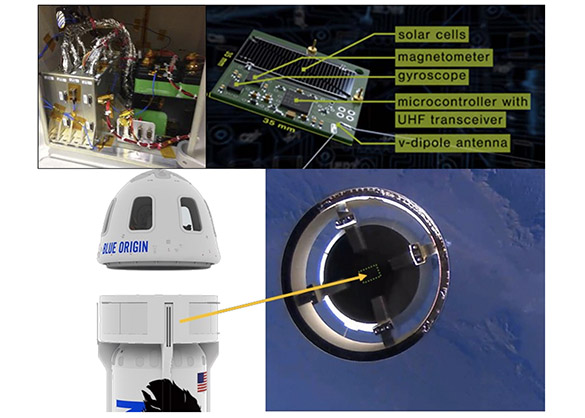Suborbital Flight Testing of Chip-scale Satellites for Earth, Lunar and Cislunar Space Applications
PI: H. Todd Smith, Johns Hopkins University / Applied Physics Lab, Van Adams (Co-I), Cosmoptera
PI: H. Todd Smith, Johns Hopkins University / Applied Physics Lab, Van Adams (Co-I), Cosmoptera

- TA08 Science Instruments, Observations and Sensor Systems
ChipSats offer an entirely new capability for making in-situ measurements (at the Earth, Moon or other solar system bodies) with broad spatial and temporal resolution, for a very low cost. This flight test is intended to help raise the TRL of these devices for atmospheric entry so that they can be implemented operationally. The deployment of 100 improved (2 gram) ChipSats with GPS and networking capability is to test not only the operational measurement capabilities but also to conduct the first ever test of survival capabilities under suborbital reentry.
This technology will combine the JANUS integration and monitoring system (T0196)
with a deployer for 100 2-gram ChipSats. Upon validation of the ChipSat operation and re-entry survivability, the TRL will advance from 6 to 7.
ChipSats could effectively and inexpensively be used to examine the atmosphere—in particular, the mesosphere—in unprecedented spatial and temporal detail. This new science would greatly enhance understanding of this critical and understudied region (too high for aircraft and balloons but too low for satellites). A large population of ChipSats could also be deployed in lieu of a single large satellite or in impactor missions (e.g. for the moon or near-Earth objects).
Technology Details
-
Selection DateTechFlights19 (Oct 2019)
-
Program StatusActive
- 0 sRLV
Development Team
-
PIH. Todd Smith
-
PI Organization
-
Co-IVan Adams
-
Co-I Organization
-
SponsorNASA

